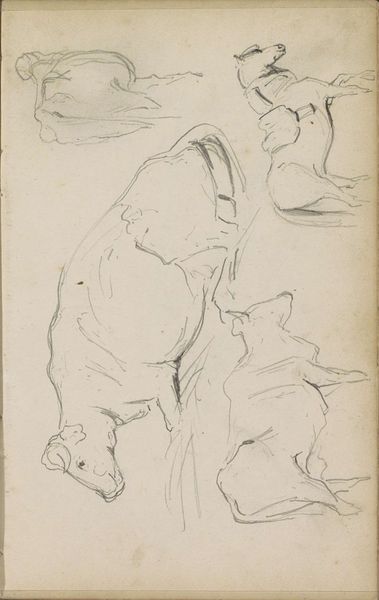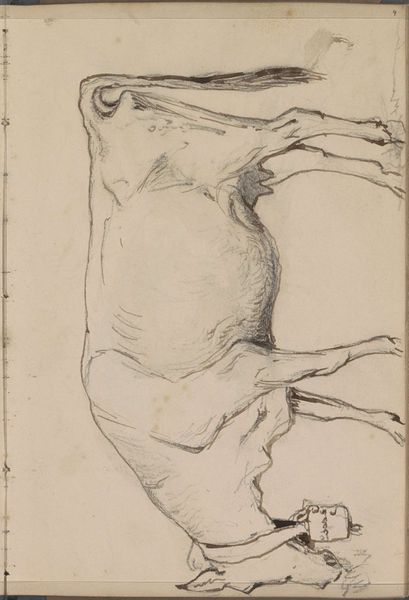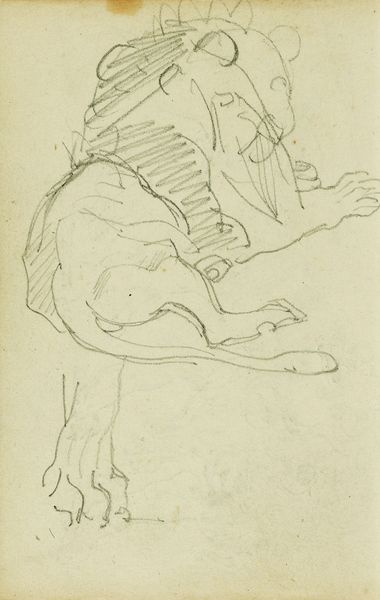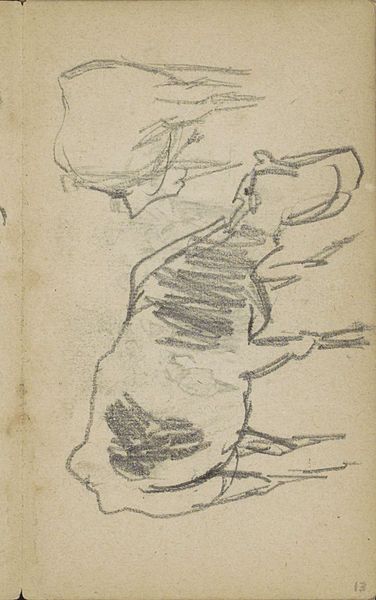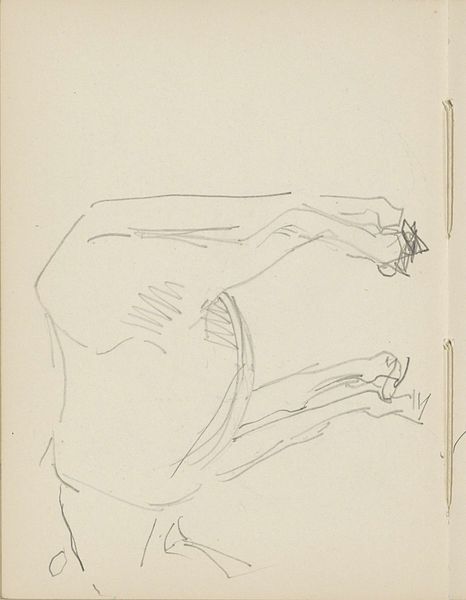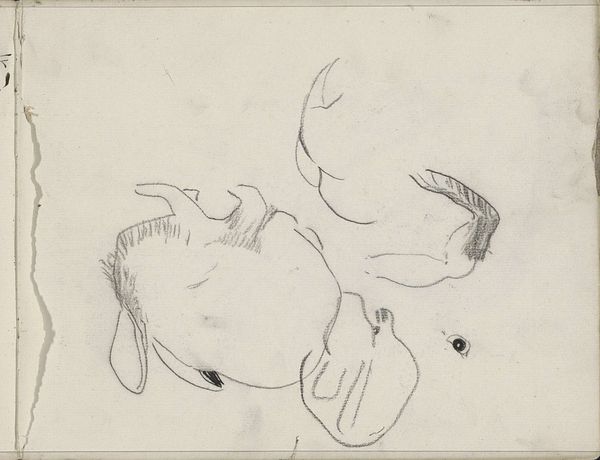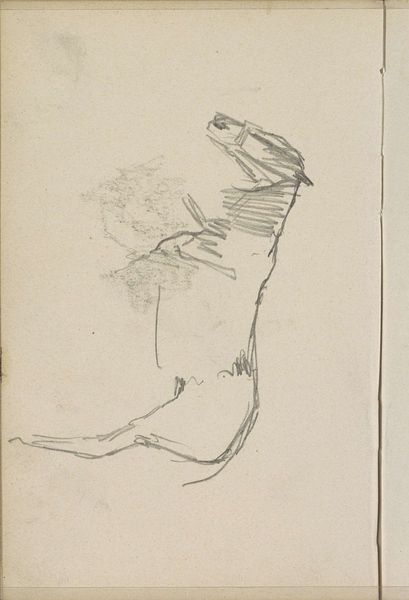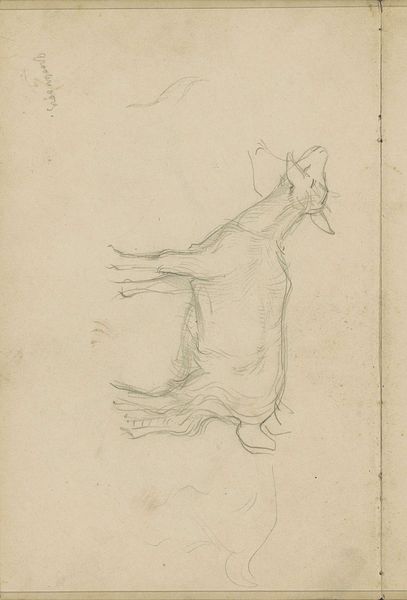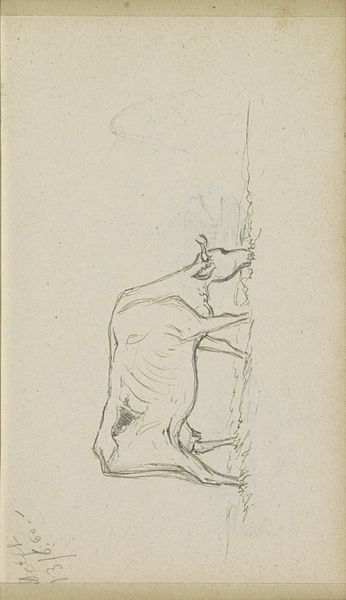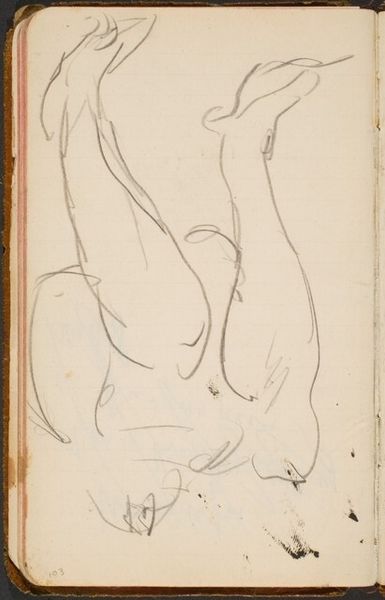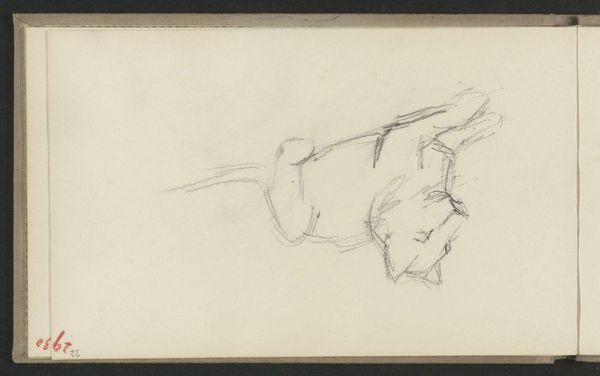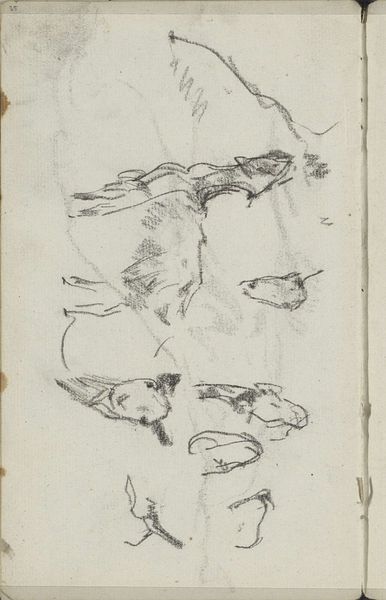
drawing, paper, pencil
#
drawing
#
pencil sketch
#
landscape
#
figuration
#
paper
#
pencil
#
line
Copyright: Rijks Museum: Open Domain
Curator: Here at the Rijksmuseum, we have a lovely pencil drawing by Johannes Tavenraat, made after 1854. It's titled "Koeien, van opzij gezien," or "Cows, Seen from the Side." Editor: My first thought is of the delicate lines; almost ephemeral. The cows are suggested, not fully rendered, giving the piece a very light and airy feel. Curator: Indeed. The artist’s use of line is quite economical, isn’t it? He manages to capture the essence of these animals with minimal strokes. Note how the varying pressure of the pencil creates depth and volume. It's pure form defining these subjects. Editor: What fascinates me is the material simplicity—just paper and pencil. Consider the societal value placed on rural life in 19th-century Netherlands. Was Tavenraat presenting an idealized version of agricultural labor? The sketch highlights the essential relationship between humans and animals in milk production. Curator: An interesting point. While the work is representational, consider its function within an artistic framework. The arrangement of the cows, one larger in the foreground and another smaller and higher up, introduces spatial play and a formal asymmetry that is quite striking. Editor: Right, the medium underscores a sketch's potential for capturing the daily realities of working-class subjects. Pencils were easily transportable—tools for quick studies but laden with societal value because drawings were inexpensive to produce at scale. Curator: Ultimately, Tavenraat invites us to appreciate the formal qualities, even within the commonplace. He abstracts from reality into an image to be examined with great scrutiny to the structure and composition. Editor: And reminds us that art is so intrinsically linked to available and affordable materials. What stories the paper and graphite can reveal about Dutch agriculture. Curator: I'll keep the importance of form in mind. It allows us to detach, analyze, and appreciate artistic choices that might be easy to overlook. Editor: It enriches the work to discuss both form and materials; an appreciation that acknowledges production and the culture of labor surrounding the objects or animals it represents.
Comments
No comments
Be the first to comment and join the conversation on the ultimate creative platform.
